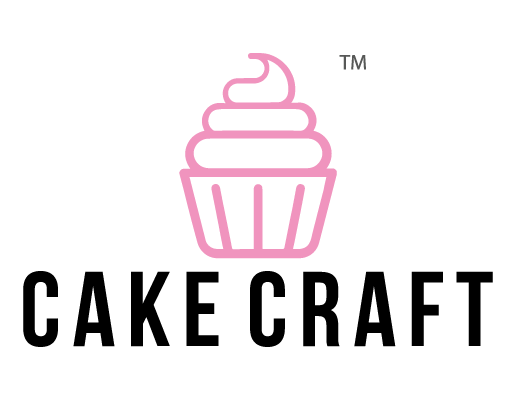Craft a Blog
How to Start a Blog (Easily)
HOW TO START A BLOG (EASILY)
Let’s cut to the chase. You want to know how to start a blog easily and don’t want to read through a whole lot of fluff and ads just to get to the meat of what you need to know right?
I’m going to help you start a blog easily.

I’ll be sharing the easy peasy steps of how to start a blog today!!
In all fairness, you might want to know more than just the simple steps below, so I’ll go into more detail as well. This way you can cut to the chase, set up your blog …and you can go through all of the other tips as well.
Easy Setup Guide to Blog:
- Pick your niche
- Decide on a web hosting platform (I use Bluehost)
- Choose a domain name. (try to get a .com name)
- Install WordPress “.org” not “.com” (I’ll explain why below)
- Choose a theme
- Start typing your very blog post!
Ok so the “Easy Setup Guide to Blog” above is just that. That’s just the skinny on how to start a blog easily. Follow those steps and that’s pretty much all you need to do to start your blog.
Now, even though you have a blog set up (assuming you followed the easy steps above), there’s a lot more that goes into a good blog that attracts people.
What is a Niche anyway?
When I started blogging I couldn’t figure what the heck a niche was. Moreover, I was clueless why I should even care. After all, I just thought blogging was just typing about the world through my eyes.
Boy did I ever have a rude awakening!
What I learned
One day I happened to stumble on a podcast hosted by Gee Nonterah of The Create & Prosper Show.
Gee, is a riot first of all! She’s a sassy and insightful entrepreneur who shares a wealth of info on blogging. If you’ve never heard Gee’s podcast, do yourself the favor and give her a listen.
In one of Gee’s podcasts, she was talking about “niching down.” She mentioned how blogs need to have a specific niche topic.
I told myself Nahhh, I like my blog just like it is. Also, I thought I could write just about whatever and, as if through osmosis, people were gonna flock to my site. WRONG!
My intentions were good but you know what they say – – the road to hell is paved with good intentions. I was doomed if I didn’t refocus and tweek my blog a bit.
Writing a blog about everything under the sun isn’t the smartest idea
and this is why:
- If your blog posts are all over the map, how is Google supposed to know what your blog is about?
- If Google can’t understand the point of your blog is then how are people going to even find out about your blog?
- If your blog is about everything under the sun, how are you planning to keep your readers interested?
Think of it this way, if you go to a Chinese restaurant and all they have is spaghetti on the menu, you may be left scratching your head and turn around and walk out.
Likewise with your blog, if someone goes to your blog to read about travel, but you’re writing about knitting’s socks, they’ll be left thinking what the heck?!?
Who’s your audience
Your blog is less about you and more about your readers. So let’s focus on who your ideal audience is for your blog.
Obviously your point of view is important to give your blog its voice. However, blogging is more about how your topics can help some else.

Your audience is the group of people you’re targeting as your ideal reader.
Be it older men, post menopausal women, techy people, do you catch my drift? I have two blogs, one is about cakes and crafting has an audience of more women than men. Although men do make cakes and crafts, the bulk of my audience are woman. This is MY target audience.
If you thought blogging was writing about all your problems in life and spilling your soul, I hate to be the bearer of bad news, it’s not! That’s something you do in a personal journal.
However, if you want to share all your life’s obstacles in an insightful way that reads more like an awesome resource for others, THAT my friend is what blogging is about!
When someone does a google search on a subject and they land on your site, you want to be that person who has just the right answer.
How to pick a niche
While trying to learn the ins and outs of blogging, I joined a lot of beginners’ groups. One of the most common question I noticed was ‘how do I pick a niche?’
Let’s dissect this subject for a minute.
Try answer these questions when thinking about what kind of niche to blog about:
- What are you good at?
- Is there something you’re absolutely passionate about?
- Do you have a hobby or profession you know lots about?
- Are you a parent with insight to share?
- Are you a single person who prefers to live life without having children?
- Do you have a certain perspective for your gender, age group or culture?
- Are you techy or a fashionista?
- Ask yourself the questions about and I’d be willing to bet you can come up with a brilliant niche!
Once you pick your niche, try to narrow the subject if possible.
Example: Your niche is Sports
Niche down possibly to: type of sport, best sports for kids, travel sports, college sports, etc.
You don’t always have to niche way down but it doesn’t hurt.
If you can keep kicking butt and writing great content on a super specific subject, YOU will be the authority people look to on that subject.
Domain names
Be very careful when asking for help with a domain name.
Did you know that if you type in a possible domain name to check its availability on sites like GoDaddy, they often times buy it up and sell it to you at a higher price. HOW RUDE!!
When I first heard about this, I was so mad. You have the perfect name, you type it in the search field and see that it’s available. You want to think about it overnight…and just like that, the very next day it’s gone?!?
WHAT! Yep, it’s no coincidence. It’s a sneaky little trick and that’s why I’m careful where I do my searches.
.Com, .Net, .Edu, .Gov — Why it matters
Try to pick a .com name instead of .net or something like that. Sites with a .com are more likely to get better results. If you insist on your name and think doing a .net is better because it’s still the name you wanted, think again.
People will usually type .com and go to the other site with a similar name. So long story short, do yourself the favor and find a name with a .com.
Other variations are .edu (for education), .gov (for governmental agencies) and so on. So again, just my two-cents but trust me, find a .com name for your blog.
Web Hosting – What’s that for anyway?
I’m going to make the subject really simple to understand.
You’ve registered your domain name right? Ok, so now you have to have a place to park your site.
There’s plenty of hosting sites which are fine but you don’t own your site. So if that company doesn’t have enough people using their platform, they can close up shop and guess what, all your hard work is gone! Poof…up in smoke and no way to get it back.
Those hosting sites are nice they have everything set up for you. They ask a few questions and voila’ — your beautiful site is all done.
Why Self-Hosting is Different from Hosted Sites
The reason self-hosted is different is because you own the site. You get to put all the elements together to look just like you want it.
Yes, you can hire someone to set up your blog. I chose not to because I want to be hands on and I like understanding how to tweek things as I see fit.
Have you ever heard someone say ‘You’re not the boss of me?’
With self-hosting YOU are the Boss of YOU!
So needless to say, I highly recommend self-hosting. I use Bluehost and I think they’re great.

Bluehost has a team that can help you step-by-step 24/7.
I almost gave up at one point but I’m glad I didn’t. Bluehost offers a service where the tech links up to your blog and literally holds your hand (figuratively that is).
With Bluehost’s service, the tech on the other side annotates and walks you through the steps of building your site. So you can see exactly how to use the functions of your site as they point and show you where to click.
WordPress “.org” versus “.com”
Stop! Before you go any further, think about what the purpose of your blog is before you start adding content.
You’ve likely heard the term affiliate marketing. If not the short story on that is leveraging your blog to make money.
You CANNOT do affiliate marketing on the .com version of WordPress.
How do I know? Well when I started building my blog, I didn’t pay attention to when someone told me to build on the .org site. I created everything on WordPress “.com” and later found out I couldn’t monetize.
I wasn’t going to be able to use affiliate links and ads the way I’d planned. The .com version of WP just doesn’t have features that permits that.
Soooo, at the end of the Bluehost again helped me because they moved everything over to the .org version of WP. That’s called migrating.
If your only purpose is to have a blog that’s more of a personal journal or you have no hopes of making money at blogging, the .com version may be for you.
If on the other hand you think one day you want to make money at blogging, do yourself a favor and definitely set everything up on WordPress.org.
Self-hosting isn’t free. Real world my friend, you cannot start a business for free ever! If someone tells you otherwise it’s likely a scam.
Self-hosting usually isn’t terribly expensive but you may have to pay for the first year up front. Then going forward, you can opt to pay monthly.
Do YOURSELF a favor. Invest in YOU!
You have to believe in yourself before anyone else does!!
What’s a Theme
Ok, so you have your .com name. You have a self-hosted site by Bluehost, now what?
Log in to WordPress via your Bluehost account. You’ll see there are all kinds of themes to choose from.
The theme you choose is going to set up the framework of your blog. It gives you the template of where everything is set up, color schemes and the overall vibe of your blog.
Some themes are free and some you have to pay for. They’re not terribly expensive but check out the demos before paying for a theme you hate.
You can also go to the websites of your favorite bloggers and see what elements they have to their site that speaks to you.
Sometimes you can even scroll all the way to the bottom and they share what theme they use.
Do not copy someone’s site 100%! That’s bad web etiquette and is a No-No. Being inspired by someone’s site is totally okay however.
Once you have chosen your theme, the fun begins!
Start filling in the content to your blog adding in an About Me page and so forth.
Welcome to being a Blogger! Now get to it and start adding all that brilliant content.
Plan on having at least 10 blog posts before you launch the site and it goes LIVE for the world to see.
Now, curtain up TaDaaaa!!!
You are an official Blogger!!! {{{{applause}}}}
I hope this helped you on your blogging journey.
My goal is to help others who are just starting out because I was there once before. I learned a lot from the school of hard-knocks!
I’m still always learning and would love to stay in touch with you. If you’d like to connect and enjoy this journey together, sign up for my newsletter and other helpful tips along the way.
**And as always, sharing is caring! **
I always appreciate a comment or a share on social.
